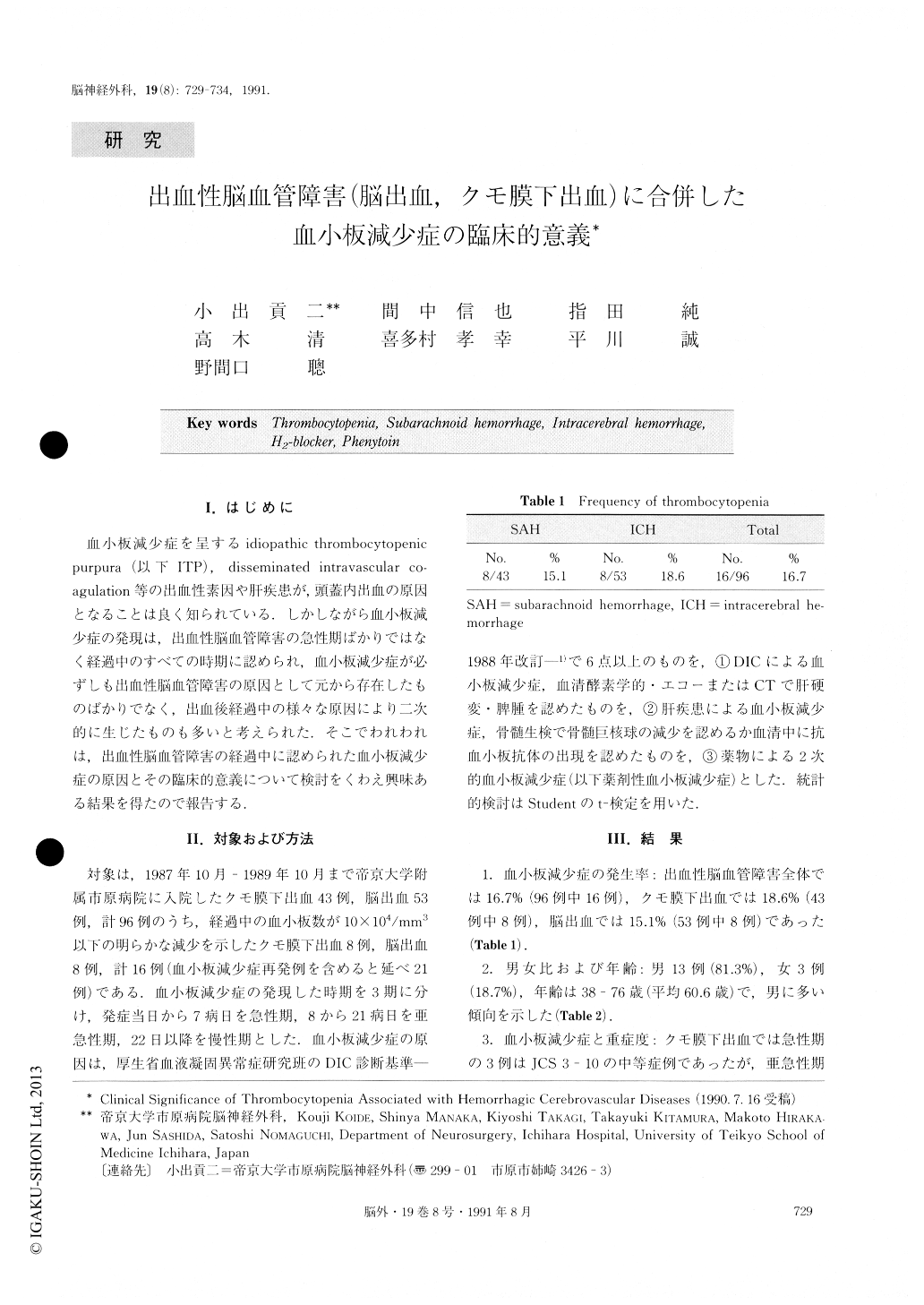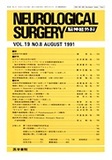Japanese
English
- 有料閲覧
- Abstract 文献概要
- 1ページ目 Look Inside
I.はじめに
血小板減少症を呈するidiopathic thrombocytopenicpurpura(以下ITP),disseminated intravascular co—agulation等の出血性素因や肝疾患が,頭蓋内出血の原因となることは良く知られている.しかしながら血小板減少症の発現は,出血性脳血管障害の急性期ばかりではなく経過中のすべての時期に認められ,血小板減少症が必ずしも出血性脳血管障害の原因として元から存在したものばかりでなく,出血後経過中の様々な原因により.二次的に生じたものも多いと考えられた.そこでわれわれは,出血性脳血管障害の経過中に認められた血小板減少症の原因とその臨床的意義について検討をくわえ興味ある結果を得たので報告する.
Abstract
We investigated the clinical significance of throm-bocytopenia (platelet counts less than 10 × 104/mm3) associated with hemorrhagic cerehrovascular diseases. This study was conducted in 96 patients suffering from hemorrhagic cerebrovascular diseases. We divided the clinical course into 3 stages : acute (from the 1st to 7th day) , subacute (8th - 21st day) and chronic (after the 22nd clay). The average age of the patients with throm-bocytopenia (TCP) was 60.6 years old. TCP was More frequent in men (81.3%) than in women (18.7%) . TCP developed in 18.6% (8/43) of patients with subarach-noicl hemorrhage (SAH) and in 15.1% (8/53) of those with intracerebral hemorrhage (ICH) . Among the pa-tients with SAH, four were in the acute stage, three in the subacute stage and two in the chronic stage. TCP due to SAH was more likely to develop in the acute and/or subacute stage. TCP due to SAH showed two peak appearances : the first was within 24 hours (n 3), and the second was around 10 clays after onset (n= 3) . The cause of TCP in its late peak appearance was presumed to be the consumption of platelets clue to microembolism induced by vasospasm and/or hemo-dilution therapy. Among patients with ICH, five cases were in the acute stage, three in the subacute stage and two in the chronic stage. TCP clue to ICH was more likely to develop in the acute stage. Fifty percent (4/8)of the patients with ICH had TCP on admission. This data suggested that TCP was possibly a cause or an in-ducer for ICH. The causes of TCP due to SAH were DIC (n = 2) , liver dysfunction (n = 2) , DIC and liver dysfunction (n = 2) and drug induced (n =- 2), whereas those of TCP due to ICH were liver dysfunction (n = 4), DIC and liver dysfunction (n=2), renal dysfunction (n = 1) , and drug-induced (n = 2) . In the ICH group, five patients (63%) had liver dysfunction, which was assumed to be the most important risk factor for TCP. Drug-induced TCP was observed in a total of five cases, including one recurrent case. In one of the five cases, myelosuppression was observed, and in four cases antiplatelet antibodies were observed. Platelet counts in patients with clrug-inclucd TCP were less than in those effected by other causes.

Copyright © 1991, Igaku-Shoin Ltd. All rights reserved.


